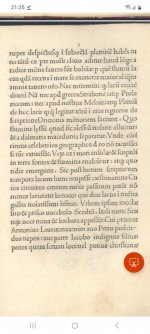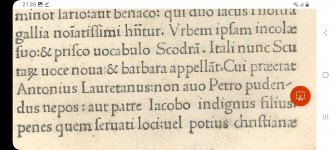You're complaining about it as if what I'm saying was invented by Albanians on the internet. Archaeologists and linguists definitely consider the Proto-Thracians to be a Bronze Age people. Lazaridis writes that Thracian was spoken in the BA Balkans etc. This is the consensus, like it or not and nobody is investigating any Proto-Thracians in Hungary. Just as there were Proto-Illyrians in the Bronze Age, so were there Proto-Greeks, Proto-Thracians, Proto-Phrygians. If E-V13 hasn't been found in BA Romania or Bulgaria or Moldova, how exactly is it "Proto-Thracian"?
You may not like what I'm saying but you won't find any paper which will call E-V13 "Proto-Thracian" if it's not found in the BA in any of these areas.
If E-V13 came to IA Bulgaria from the BA central Balkans, then, depending on the clade, it could be present in both western and eastern Balkan populations.
Lastly, why are we having this discussion here? The E-V13 subclades in IA Bulgaria aren't even related to Albanians. When we find the E-V13 which are linked to Albanians, we should discuss about the possibilities, but the southeastern ones are distant to Albanians.
Firstly, i am not complaining lol, just stating the logical fallacy of yours. And you don't represent Albanians here, you represent yourself.
I know very well about the archaeological data, i have read quite a lot about it and obviously you are just misinforming the general readers. Besides that, quote us the mysterious archaeologists with precise paper citations, don't make foggy statements. Because these kind of statements require chronology to be explained.
The E-V13 found in South-East Bulgaria are related with Insula Banului, Babadag, and the latter Bassarabi, the LBA-EIA Hallstattization period, or Eastern Hallstatt groups. These are uber -Thracian cultural complexes, 100% uniformly agreed by Romanian, Hungarian, Bulgarian, Serbian archaeologists, a zone which Daco-Thracians expanded and is of interest to local archaeologists. And they came from Northern Bulgaria <> South-West Romania and North-Eastern Serbia area. Last time i checked, that's Balkans, not Venus or Jupiter. This complex is usually lumped and called into Balkan-Carpathian Cultural Complex. Similar groups expanded not only down to South-East Bulgaria where Early Iron Age E-V13 were found but Greek Macedonia, Thessalia and down to Troy where they are known as Bukkelkeramik or Knobbed-Ware groups. Also, in Western Balkans they expanded moreso into South/Western Pannonia and Eastern Slavonia, so no wonder some E-V13 is showing around there in Iron Age.
You should come up with chronology, not if, somewhere, maybe, Central Balkans. Central Balkans what, where, timeline-period, subclade analysis. Anyone can make such foggy statements.
As for the subclades, some of them barely got E-V13 calls, so i highly suspect your way of debating, only 1 or 2 E-V13-ers were downstream classified, and just slightly downsteam E-V13, probably one or two sub-trees.







